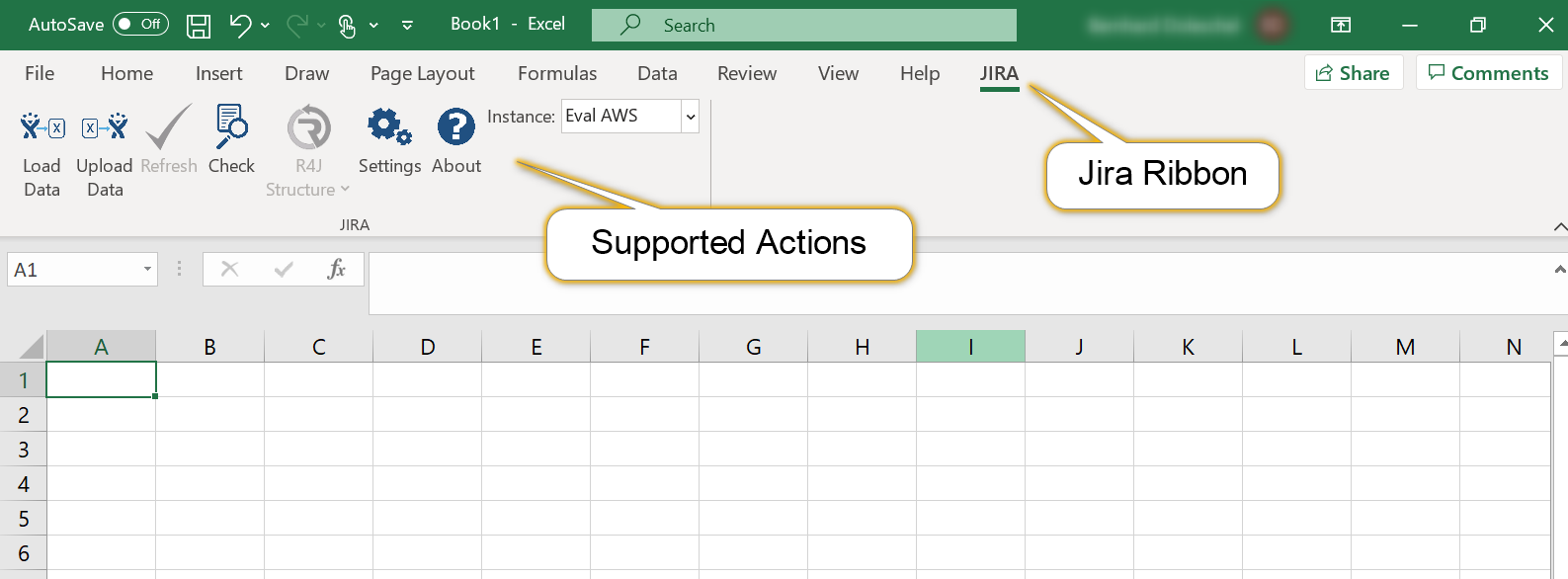System Requirements
Office 2010 and above
.net Framework 4.6.1 or newer
Supported Protocols
TLS 1.0, 1.1 and 1.2 network security protocols
HTTP and HTTPS
Configure the Jira connection
Download and install R4J Microsoft Excel add-in. Go here to get the latest version. If any problems occur during installation, install Visual Studio 2010 Tools for Office Runtime and try again.
Open Microsoft Excel and check if the Jira ribbon is now available:
Select the Settings option under the Jira ribbon. To connect, enter the Jira server URL, login user name, and password. It is possible to connect to different instances of Jira servers. (However, only one instance can be active at a time.)
Select the Test button in the Settings dialog to check if the add-in can successfully connect to the given instance of Jira.
Load Jira Issues in Excel
Select Load Data under the Jira ribbon.
There are 3 available options to select Jira issues for import into an Excel spreadsheet.
Project: Select a project from the list.
Saved filters: Select the Filters tab and choose a filter from the list.
JQL: Select the JQL tab and enter a JQL query. The expression can be validated before proceeding.
Select Next.
Select the Jira fields to include in the import. Key, Project key, Issue Type and Summary are required for the import. (The choice of fields is saved for future sessions.)
Select Finish.
After downloading the data, the Jira issues are displayed in the worksheet - for example:
The headers have a color scheme that identifies read-only versus modifiable fields:
Dark Gray: read only
Light Gray: editable
Comments
Issue comments are displayed as Excel notes.
Settings
The Settings dialog displays the login data for the different Jira instances that have been used. The following global options are available:
Option | Result |
|---|---|
Remember me | Login credentials are saved for future sessions. |
Show changed values as excel comments | Comments noting the changes made by the import are added to the affected Jira issues. |
Show issue key column as hyperlink | The values of the Key column are formatted as hyperlinks to provide quick access to the issues on the Jira server. |
Write Debug Logs | Debugging information is logged. Note that the debug file grows quickly! |
Maximum number of comments per issue | The number of comments that are downloaded from the Jira server is limited to the given number. |
Limitations
Folder headings in the project tree numbers and descriptions are not supported.
MAC OSX office and Microsoft Office 365 on Office.com are not supported.
The value of the Resolution field of an unresolved issue is empty, following Jira’s practice.
The workflow Status field cannot be modified.
Issue comments cannot be updated or deleted.

